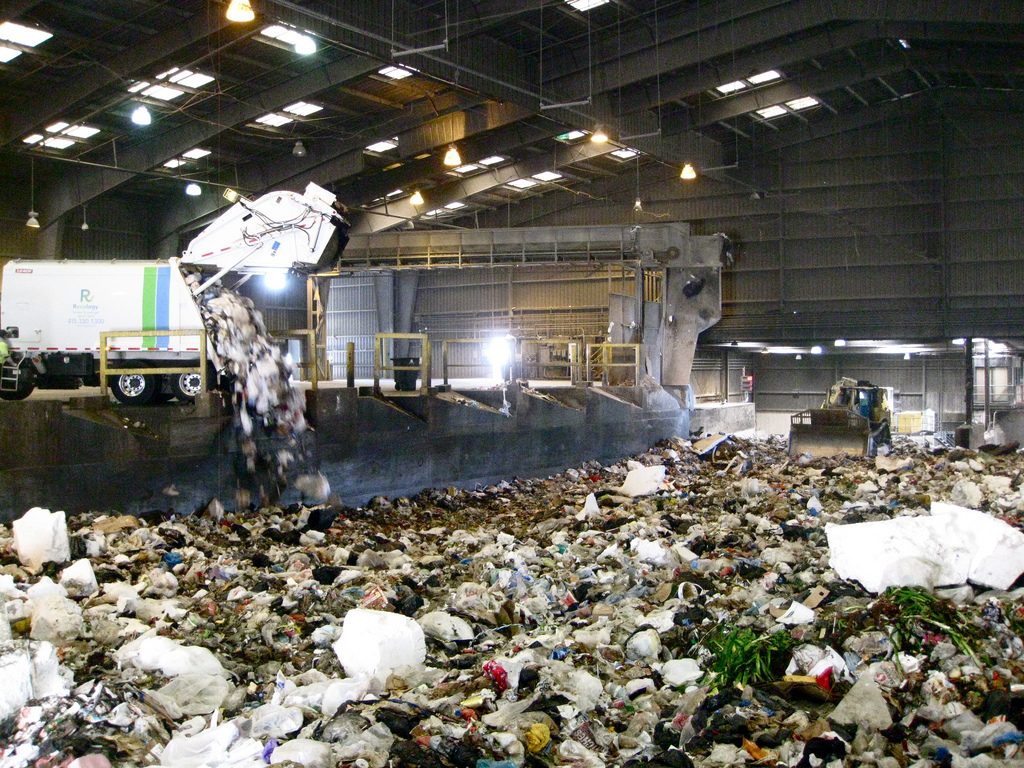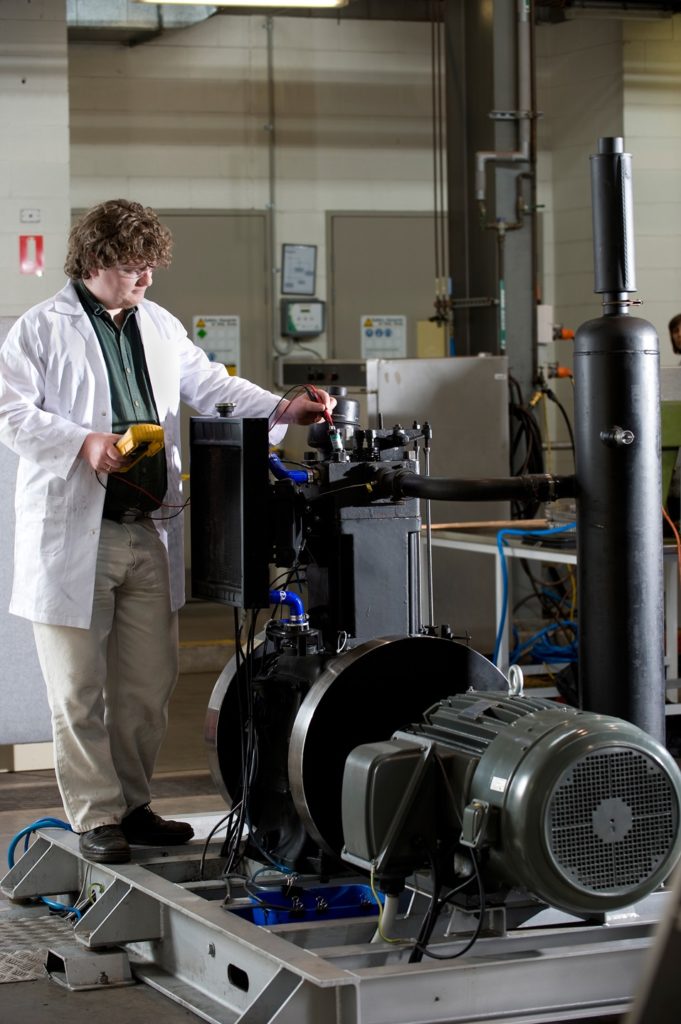Bioenergy—generating electricity from refuse—is an effective solution, so why aren't we getting on board?

Australia is the only developed country that doesn’t deploy significant large-scale waste-to-energy as part of its waste management systems. Flickr/Cyclyst/CC
Imagine if we could take waste products that would otherwise be thrown out and transform them into energy to power our homes? We can! It’s called ‘bioenergy’.
According to the Clean Energy Finance Corporation (CEFC), bioenergy technologies are already ‘reducing carbon emissions, improving energy productivity and generating reliable baseload renewable energy around the world’. So what’s happening here in Australia?
Unfortunately, bioenergy currently accounts for just 0.9% of our electricity output—much lower than the Organisation for Economic Cooperation and Development (OECD) average of 2.4%. We’re also the only OECD country that hasn’t implemented a large-scale ‘waste-to-energy’ scheme to cleverly manage its waste.
But before we get down in the dumps, it’s worth looking at the significant growth and investment opportunities in bioenergy.
A stinking big challenge
While energy storage technologies are developing rapidly, intermittency of supply still remains the biggest challenge to widespread use of renewables such as wind and solar.
As romantic as eating by candlelight is, let’s face it: we want to be able to turn the lights on tonight and long into the future. Having a stable energy supply is critical for avoiding blackouts.
This is where bioenergy can steal the limelight. It has the potential to help decarbonise Australia’s energy sector while offering reliable baseload supply – even when the sun isn’t shining and the wind isn’t blowing!
A ‘wasted’ opportunity
As an added bonus, by making use of the renewable energy in otherwise unwanted materials we prevent piles of waste products from ending up in landfill. Did you know that once material begins to decompose in landfill it releases methane, a greenhouse gas 21 times more potent than CO2? While some modern tips capture methane and convert it to power (another form of bioenergy!), avoiding landfill in the first place is a far more effective solution.
An energetic future

This jazzy direct injection carbon engine can reduce greenhouse emissions.
But bioenergy is more than just electricity from waste. The term encompasses wide range of technologies, feedstocks and products which can be used for a whole suite of purposes.
Here at CSIRO we’re researching a range of bioenergy applications. For example, our Direct Injection Carbon Engine (DICE) is being modified to run on biomass (renewable organic matter). It has shown significant potential for reducing CO2 emissions from burning coal, with up to 50% reduction for brown coal and 30% for black coal.
We are also finding new ways of using biomass materials in industries like smelting and steelmaking to reduce their use of coal. This work has the potential to widen the scope of bioenergy opportunities in Australia and around the world.
Other examples of bioenergy include:
- Using microalgae oils and biomass for aviation fuel (we’ve screened more than 200 types!).
- Using timber mill waste to make electricity.
- Using municipal solid waste to produce liquid fuels.
- Digesting organic waste streams from sewerage plants or food processing plants to generate biogas.
- Fermenting sugar cane and other grasses to produce ethanol which can be added to our petrol.
So expect to see bioenergy being used more and more across a diverse range of applications. After all, one person’s trash is another’s renewable energy treasure!
Find out more about our energy research here.


1st April 2017 at 3:49 pm
CSIRO are sensational scientists. What a about trialling a crowd funding R&D project. We all know that when you have adequate funding even more brilliant technology can be born in Australia. Israel have massive funding, almost unlimited..from private enterprise who are brave enough to handle the ups and downs of research to enjoy substantial ROI’s. We have billions idling in superannuation when it could be building the future for kids and producing some great returns to boot.
What a shame the resident PM has wasted his innings.
24th March 2017 at 6:56 pm
Waste to Energy plants are common in the US and many European cities. Their environmental impact is minimal, except beneficially in that they almost totally eliminate landfill while producing reasonably ‘green’ energy. Japan has had them for decades. In Australia, their uptake is just starting – 2 have been approved for construction in WA – although the waste heat which is sometimes used in European plants will probably not be used which is unfortunate.
24th March 2017 at 5:58 pm
Since being made redundant by CSIRO in 1999 and going bush to live, I have been watching the regional waste management people here in the south coast of WA – Albany and its hinterland. I have been getting frustrated that the available technologies for converting the waste to energy have been either ignored or not understood. Local government has a culture that, if they haven’t thought of it, then no matter what you suggest as an improvement, they hang on to their own ignorances I asked a leading question at a Plantagenet Shire council meeting some time ago suggesting that there was a wealth of technologies available to apply to waste management and remove the need for landfill sites to be used. Got a blank stare from all but one of the 9 councillors. Regionally, household waste is collected up to a 70km radius of Albany and transported to a waste management facility near Albany. Perth has a relatively new large waste disposal site some 100km south of the city adjacent to the Albany Highway. All these sources ar already in a transportable form so getting them to one or more bi-energy plants should not be a problem.
Why is it no being done?? I suggest both the culture of government organisations (state and local) and ignorance of the other options for waste disposal – particularly bio-energy.
So you have given me the very documentation I was going to go looking for to start a challenge to the status quo. The one supporter I have had on our local council has left the council. But there is a waste management authority in our region which I feel a whole lot more comfortable speaking to about what they are doing and what they could do. Given the technology has been around a long time and is well proven, one would hope the sceptics might have to reconsider their stance. As Alan Lane rightly says, the R&D needed is to put the knowledge into real practical situations.
19th March 2017 at 3:49 pm
When I worked at CSIRO Division of Food Science and Technology, I developed the anaerobic digestion (“biogas”) process to convert fruit and vegetable processing waste solids into gas. Most wastes were almost completely converted into gas, virtually eliminating cartage and tipping costs, and enough gas was produced to supply the processing heat for the factory’s operations. It has taken a long time for this simple and cost-effective technology to become accepted and it is ironic that it now appears to be the attracting attention it deserves. Has anyone read my extensive publications on this, or are we re-inventing the wheel?
18th March 2017 at 8:24 am
https://youtu.be/JgSOuMHr1pI in Sweden they have been doing this for years; there is technology out there we dont need to reinvent the wheel!
20th March 2017 at 1:23 pm
Thanks Jim. Yes, there’s lots of expertise in Europe. There actually is a full-scale biogas plant called “Earthpower” operating in Moorebank (western Sydney) on food processing wastes which was built by a German company. It takes wastes from a wide catchment, it’s technically advanced and has been in full operation for several years. No need for any more R&D; just engage the appropriate contractors to put them in! Maybe government loans to support the disseminaton of the technology here.